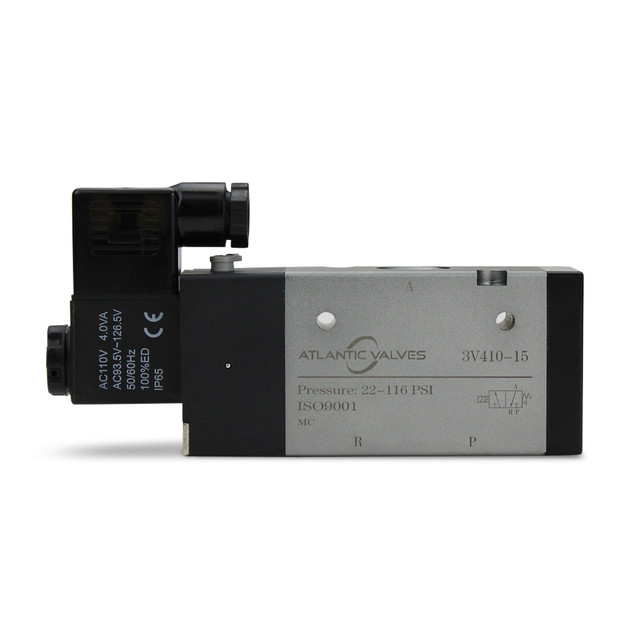Troubleshooting Pneumatic Valves
When Air Stops Flowing: Common Pneumatic Solenoid Valve Problems and How to Fix Them
In the world of industrial automation, even a small failure can bring operations to a grinding halt. One of the most common culprits? Pneumatic solenoid valves. These critical components act like traffic controllers in compressed air systems—regulating direction, pressure, and flow to keep machines moving smoothly. When they malfunction, the entire system can slow down, misfire, or shut off entirely—leading to costly downtime and, in some cases, serious safety hazards.
Understanding the typical failure modes of pneumatic solenoid valves—and how to fix them before they spiral into bigger issues—is essential for any facility that depends on compressed air.
What Do Pneumatic Solenoid Valves Actually Do?
Pneumatic solenoid valves use electrical signals to control the flow of compressed air, which is used to drive actuators and other equipment. They’re integral to processes such as material handling, motion control, and production line automation. A typical example is the 4-way pneumatic solenoid valve, widely used in industrial systems to direct airflow with high precision.
Why Do Pneumatic Solenoid Valves Fail?
Despite their sturdy design, pneumatic solenoid valves are not immune to failure. They endure harsh operating conditions—constant cycling, environmental exposure, and varying air quality. When something goes wrong, the entire system feels it.
Let’s explore the most common failure modes and how to detect and resolve them effectively.
1. Unresponsive Valve (No Actuation)
When a valve fails to respond to control signals, downstream systems lose functionality.
Common Causes:
-
Solenoid burnout from excessive heat or voltage spikes
-
Electrical faults like wiring issues or low voltage
-
Air supply problems including pressure drops or contamination
Fixes:
-
Replace damaged solenoid coils and install surge protection
-
Repair or replace faulty wiring and ensure signal continuity
-
Monitor and regulate air supply pressure, clean filters, and use push-to-connect fittings
2. Valve Stuck in One Position
Valves are designed to switch positions to control airflow—but contamination, worn parts, or improper installation can stop them in their tracks.
Root Issues:
-
Contaminants blocking internal movement
-
Damaged seals or plungers causing internal friction
-
Improper installation or misalignment
Remedies:
-
Disassemble and clean valve internals thoroughly
-
Replace worn components and lubricate if specified
-
Ensure proper alignment and secure mounting during installation
3. Delayed Valve Response
When response time lags, the entire automation rhythm is thrown off.
Likely Causes:
-
Insufficient air pressure or flow due to undersized compressors or leaky lines
-
Blocked exhaust ports, which trap residual air
Troubleshooting:
-
Measure and adjust airflow rates and line pressure
-
Clean or replace exhaust filters and mufflers to allow quick air release
4. Excessive Noise or Vibration
Strange sounds and shaking are red flags—often indicating deeper issues.
Potential Problems:
-
Loose fasteners compromising structural stability
-
Resonance in the air supply system from poor airflow dynamics
Solutions:
-
Tighten fasteners to torque specs and replace damaged ones
-
Reconfigure pipelines and install damping mechanisms or mufflers to reduce resonance and improve operator comfort
Pneumatic Valves Q & A
How can I tell if my pneumatic solenoid valve is the right type for my application?
Selecting the right valve depends on several factors including the number of ports (2-way, 3-way, 4-way), required flow rate, system pressure, actuation type (direct-acting or pilot-operated), and environmental conditions (e.g., temperature, moisture, dust). Consulting a valve expert or referencing a manufacturer’s selection guide can help ensure you choose a valve optimized for your specific use case.
How often should pneumatic solenoid valves be maintained or inspected?
A good rule of thumb is to inspect valves quarterly for signs of wear, contamination, or performance issues. High-use or mission-critical systems may require monthly inspections. Preventive maintenance should include cleaning, verifying electrical connections, checking air quality, and monitoring actuation timing.
Can I retrofit an older system with modern pneumatic solenoid valves?
Yes, many modern valves are designed to be backward-compatible or adaptable with older systems. However, compatibility depends on size, port configuration, control voltage, and pressure ratings. Retrofitting may require updated fittings or minor modifications to mounting hardware or wiring.
What’s the difference between a solenoid valve and a manual pneumatic valve?
A solenoid valve is electrically actuated and allows for automated control via signals from a PLC or control system, making it ideal for high-speed, repetitive tasks. Manual valves require human intervention and are typically used for simple on/off control or in systems where automation isn’t necessary.
How does air quality affect pneumatic solenoid valve lifespan?
Poor air quality—laden with moisture, oil, or particulates—can severely degrade valve components, leading to sticking, internal corrosion, or seal failure. Using air dryers, coalescing filters, and proper filtration systems will significantly extend the life of your valves and improve overall system reliability.
Going Beyond the Basics
While many issues can be diagnosed with simple tools like multimeters and pressure gauges, more advanced techniques—such as thermal imaging and predictive diagnostics—offer early warnings of stress and failure before they manifest visibly. A strong preventive maintenance routine goes a long way in extending the life and performance of your valves.
Need Expert Help?
The team at Atlantic Valves is here to support your operations—from selecting the right valve to troubleshooting performance hiccups. Whether you’re planning a system overhaul or just need a part replaced, we’re ready to help ensure that your automation runs like clockwork.

